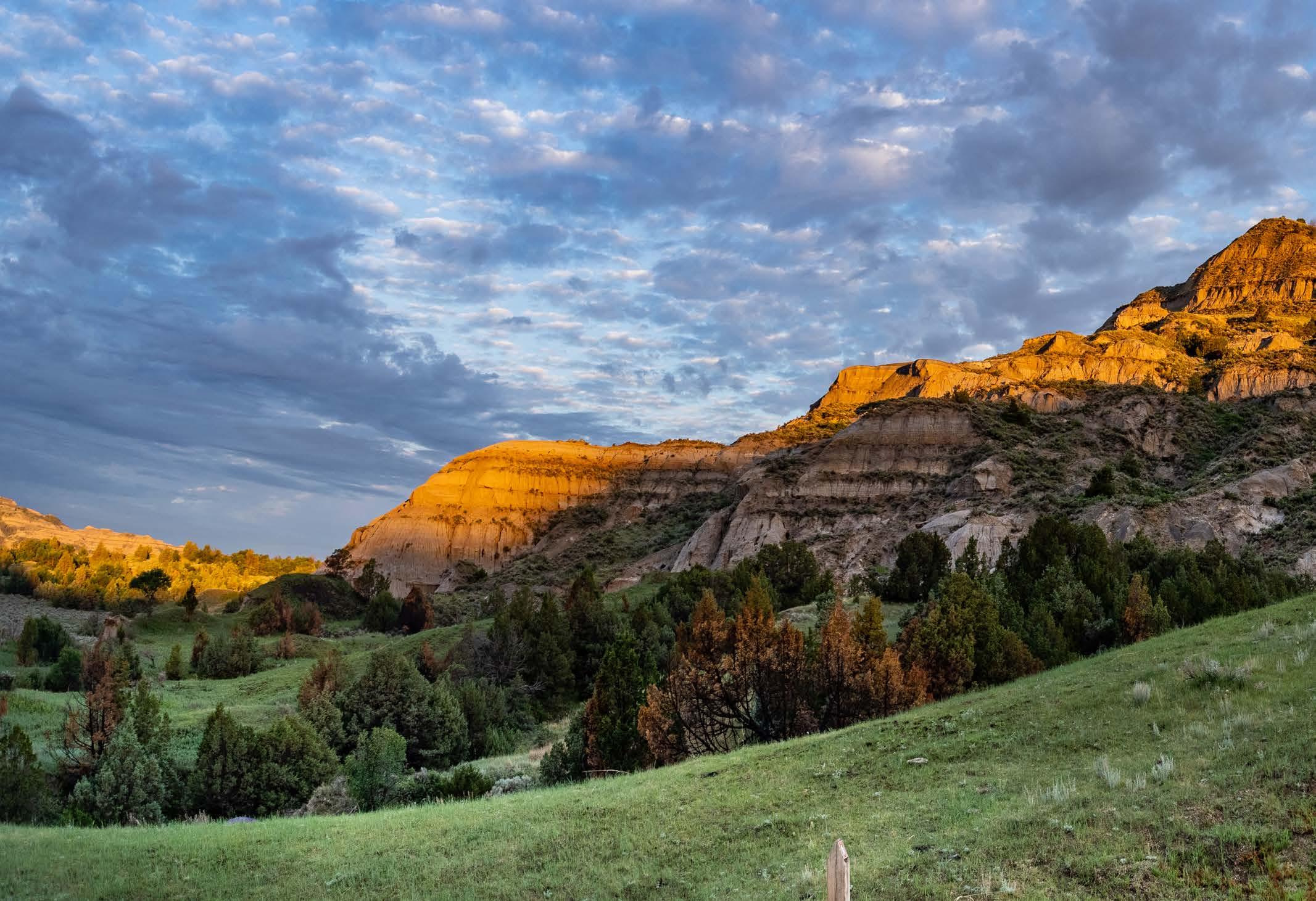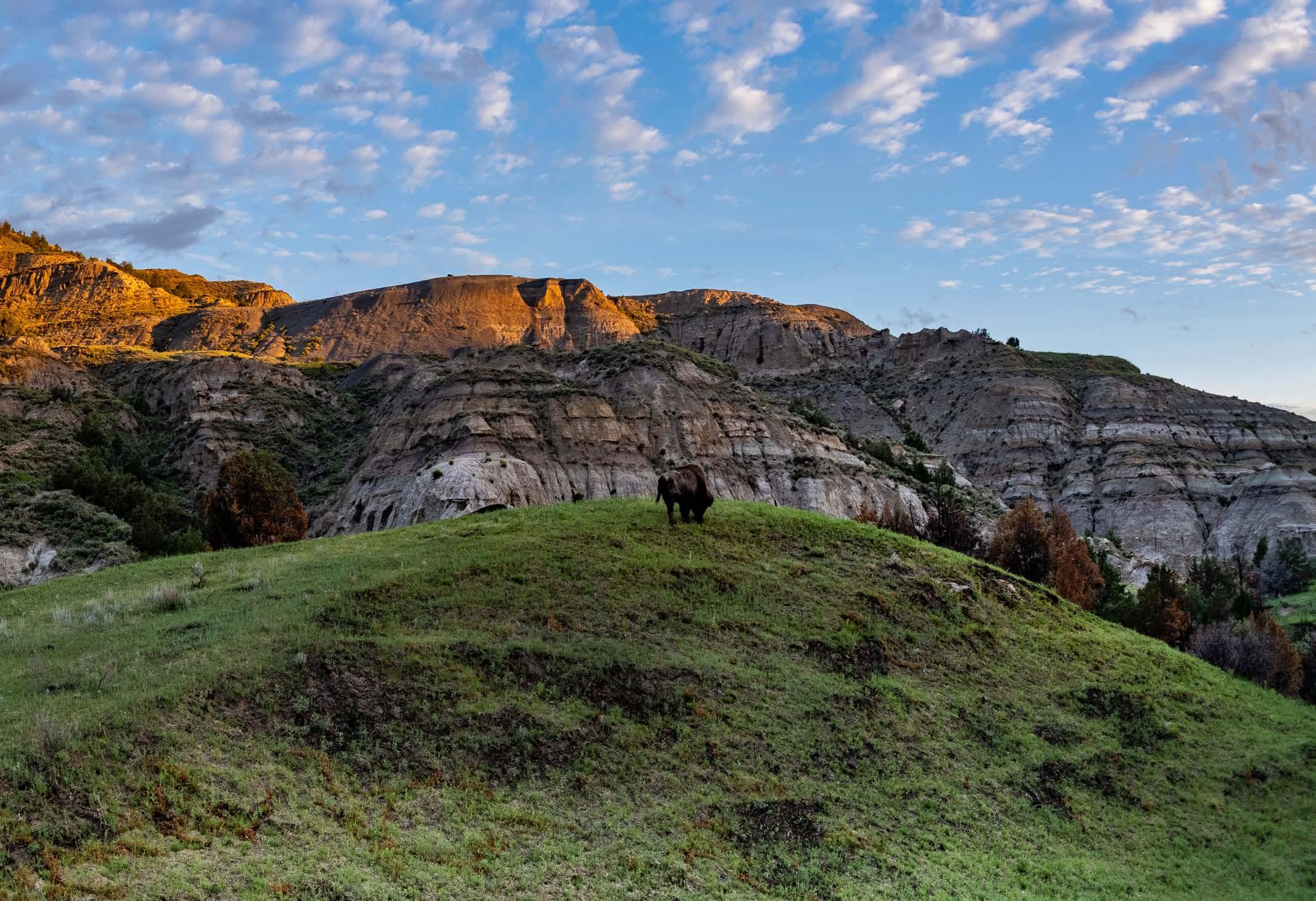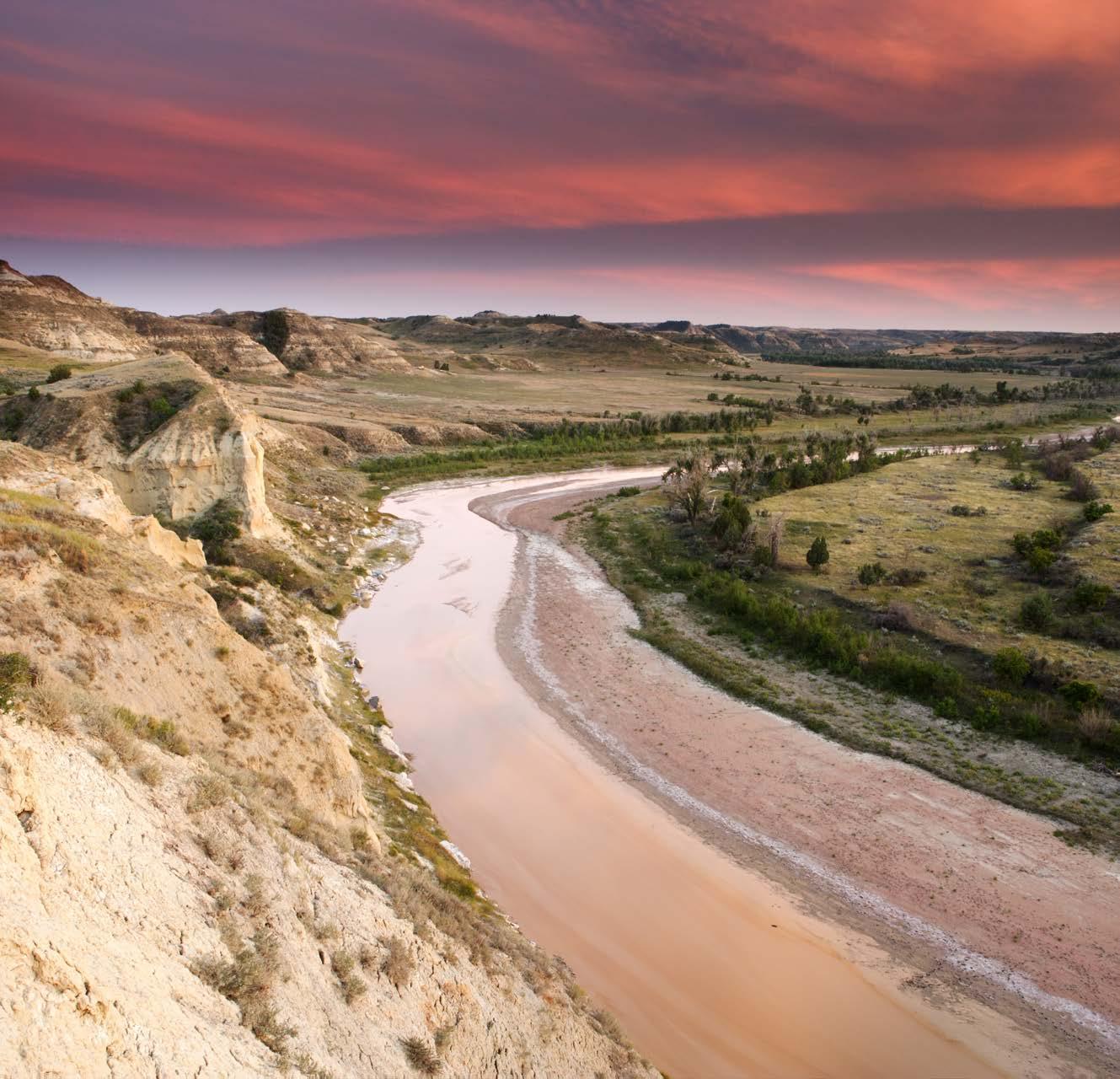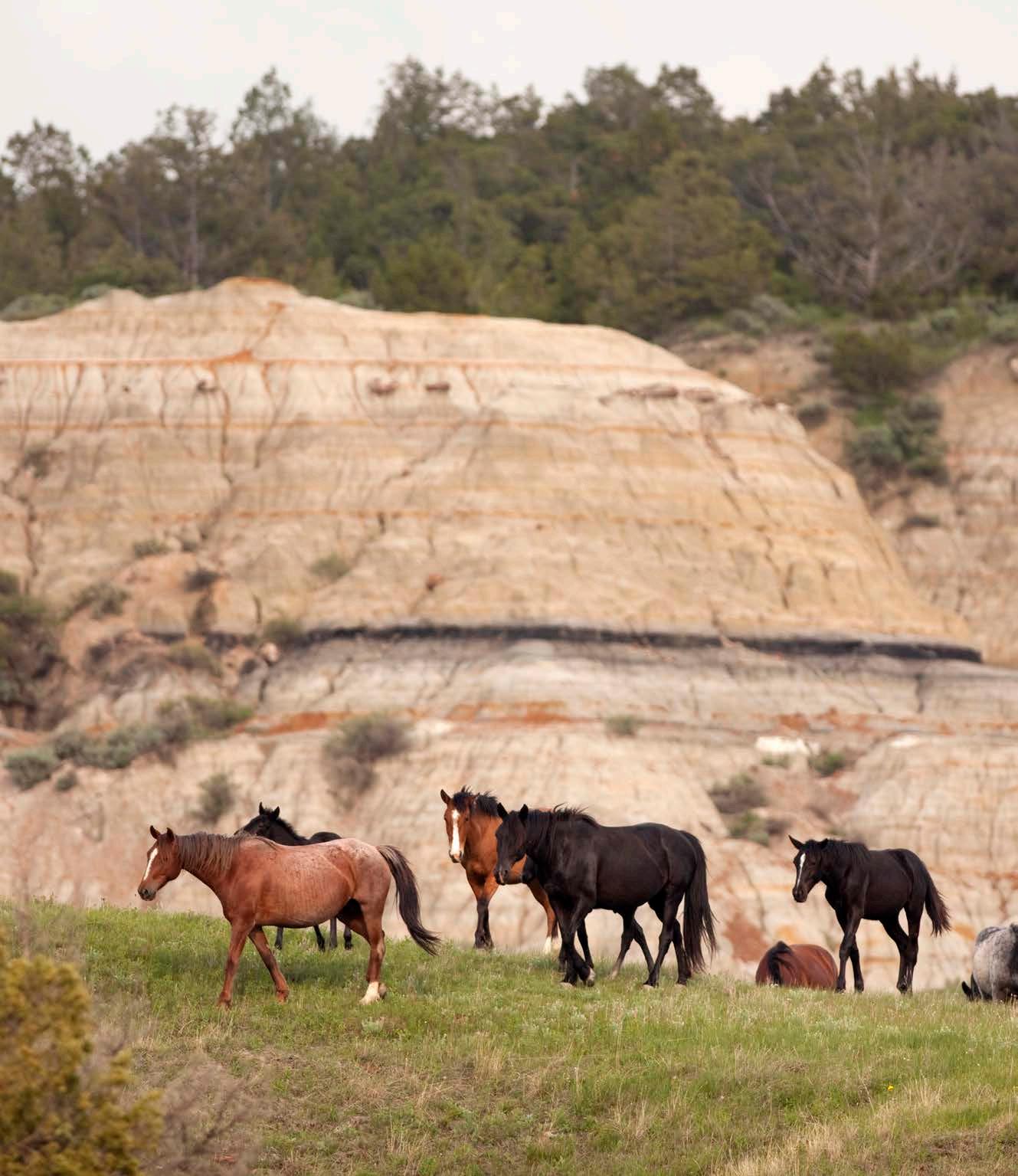
4 minute read
Theodore Roosevelt National Park
Located in western North Dakota, where the Great Plains meet the rugged badlands, sprawling Theodore Roosevelt National Park memorializes the 26th U.S. president, who began ranching operations in the Dakota Territory after the death of his wife and mother in the late 1800s. However, the park’s cultural history extends back thousands of years.
Whether directly or indirectly, the park is greatly impacted by environmental factors, be it glaciation, ancient swamps and river deltas, or constant winds and sporadic, torrential rainstorms. From its flood plains to its forests, prairies, rivers and streams, it’s a land of stark contrasts filled with fascinating geologic formations, glacial features and fossils.
The region’s historic inhabitants include the Mandan and Hidatsa, whose traditional bison hunting grounds included the Little Missouri River basin.
The Crow used the eastern edge of the badlands, while hunting and trading drew other tribes — such as the Blackfeet, Gros Ventre, Chippewa, Cree, Sioux and Rocky Boy — in the early 19th century.
The Flora and Fauna
A wide variety of animal species call Theodore Roosevelt National Park home, thanks in no small part to its native grasses, which supply sustenance for large and small grazing animals. Its varied habitats attract a diversity of birds, while its intriguing terrain results in fascinating microclimates — from warm, dry slopes to cooler, wetter juniper woodland and river bottoms that teem with life.
Visitors may see bison, wild horses and elk, as well as pronghorn, prairie dogs, and white-tail and mule deer. Plenty of reptiles — like bull snakes, prairie rattlesnakes, western painted turtles and short-horned lizards — are residents, too, as are more than 186 types of birds and amphibians, such as boreal chorus frogs and tiger salamanders.
As for plant life, more than 400 species have been identified in the park’s prairies, grasslands, forested and cooler slopes, and dry, south- facing buttes. Boasting an impressive display of wildflowers, the pasqueflower is the first to bloom, followed later by sunflowers, asters and rabbitbrush.
The Weather
Warm, sunny weather prevails in summer, when temperatures typically are in the 70s F and 80s F. Conversely, winters are cold — in the single digits — from December through February. The park receives an average of 15 inches of precipitation per year, which includes an average of 30 inches of snow during the winter.
Violent thunderstorms in summer and blizzards in winter can occur. Watch for current conditions on the park’s website.
The Hikes, Drives and Viewpoints
Caprock Coulee Loop
The 4.4-mile Caprock Coulee Loop travels through dry washes, with vistas of the Little Missouri River and vibrant badlands landscape. Wildlife sightings are common along this route, which ascends 730 feet.
Wind Canyon Trail
Short and sweet, the family-friendly, .5-mile Wind Canyon Trail begins at Scenic Loop Road, taking hikers past winderoded cliffs above the Little Missouri River, culminating at a dramatic lookout point over the breathtaking, barren landscape.

Getty

Getty
Painted Canyon Nature Trail
A short hike just off of I-94, the 1.1-mile Painted Canyon Nature Trail drops down into the canyon, revealing vivid layers of eroded rock and a proliferation of wildflowers and junipers.
Boicourt Overlook Trail
The .8-mile out-and-back Boicourt Overlook Trail is a stunner offering vast panoramas of the rugged, rolling landscape and distant buttes from above.
Petrified Forest Trail
A remote, unpaved backcountry route, the 4.4-mile Petrified Forest Trail lends insight into the park’s geologic past, when it was dominated by shallow swamps and soaring trees. After traveling up out of the badlands into a wide prairie, the trail splits, each side taking hikers through a valley filled with petrified stumps.
Scenic Loop Drive
From the South Unit Visitor Center, putter along 36-mile Scenic Loop Drive through the colorful badlands and prairie dog towns, with many opportunities to spot wildlife. In the North Unit, hook up with the 14-mile scenic drive, which follows the north rim of the Little Missouri River Valley for magnificent views and more chances to see wildlife.

Getty
About the Park
Location - Western North Dakota, where the Great Plains meet the Badlands
Established - November 10, 1978
Area - 70,446 acres










